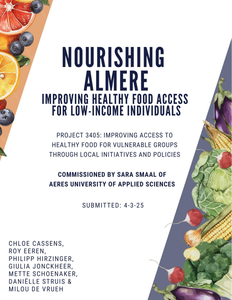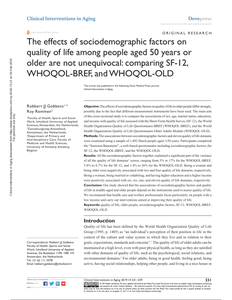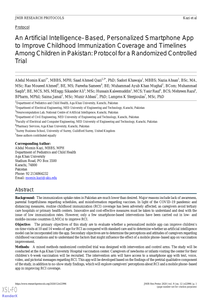Despite the many benefits of club-organized sports participation for children, sports participation is lower among children from low-income families than among those from middle- or high-income families. Social safety experienced by parents from low-income families is an important facilitator for parents to request financial support for their children’s sports participation. Therefore, the first aim of this study was to better understand parental social (un)safety in the context of acquiring financial support for children’s sports participation and how to create a safe social environment for low-income parents to request and receive this financial support. The second aim was to describe the co-creation process, which was organized to contribute to social safety solutions. To reach these goals, we applied a participatory action research method in the form of four co-creation sessions with professionals and an expert-by-experience, as well as a group interview with parents from low-income families. The data analysis included a thematic analysis of the qualitative data. The results showed that from the perspective of parents, social safety encompassed various aspects such as understandable information, procedures based on trust, and efficient referral processes. Sport clubs were identified as the primary source of information for parents. Regarding the co-creation process, the study found that stakeholders tended to overestimate parental social safety levels. Although the stakeholders enjoyed and learned from the sessions, differences in prior knowledge and a lack of a shared perspective on the purpose of the sessions made it challenging to collaboratively create solutions. The study’s recommendations include strategies for increasing parental social safety and facilitating more effective co-creation processes. The findings of this study can be used to inform the development of interventions that contribute to a social environment in which parents from low-income families feel safe to request and receive financial support for their children’s sports participation.
LINK
This study investigates patients' access to surgical care for burns in a low- and middle-income setting by studying timeliness, surgical capacity, and affordability. A survey was conducted in a regional referral hospital in Manyara, Tanzania. In total, 67 patients were included. To obtain information on burn victims in need of surgical care, irrespective of time lapsed from the burn injury, both patients with burn wounds and patients with contractures were included. Information provided by patients and/or caregivers was supplemented with data from patient files and interviews with hospital administration and physicians. In the burn wound group, 50% reached a facility within 24 hours after the injury. Referrals from other health facilities to the regional referral hospital were made within 3 weeks for 74% in this group. Of contracture patients, 74% had sought healthcare after the acute burn injury. Of the same group, only 4% had been treated with skin grafts beforehand, and 70% never received surgical care or a referral. Together, both groups indicated that lack of trust, surgical capacity, and referral timeliness were important factors negatively affecting patient access to surgical care. Accounting for hospital fees indicated patients routinely exceeded the catastrophic expenditure threshold. It was determined that healthcare for burn victims is without financial risk protection. We recommend strengthening burn care and reconstructive surgical programs in similar settings, using a more comprehensive health systems approach to identify and address both medical and socioeconomic factors that determine patient mortality and disability.
DOCUMENT
This report, commissioned by Aeres University of Applied Sciences Almere, outlines how local food initiatives and other community support systems can help to enhance access to healthy food for socio-economically vulnerable groups in Almere. Through literature research, interviews with stakeholders, and a survey among the target group, the main accessibility barriers in accessing healthy food were identified. The results show that the availability of healthy food for socio-economically disadvantaged groups is not just influenced by financial constraints, but also by spatial, social, and knowledge aspects. The report provides concrete recommendations for meaningful change, such as better collaboration between actors, awareness raising, and spatial interventions in the food environment. These results can be used by policymakers, local initiatives, and other stakeholders do develop a more sustainable and equitable food strategy for Almere, where healthy food is accessible to everyone.Keywords: healthy food; Socio-economically vulnerable groups; Accessibility barriers; Recommendations for meaningful change; Food environment theory
DOCUMENT

Citizen science – the active participation of lay people in research – may yield crucial local knowledge and increase research capacity. Recently, there is growing interest to understand benefits for citizen scientists themselves. We studied the perceived impacts of participation in a public health citizen science project on citizen scientists in a disadvantaged neighbourhood in the Netherlands. Local citizen scientists, characterised by low income and low educational level – many of whom were of migrant origin – were trained to interview fellow residents about health-enhancing and health-damaging neighbourhood features. Experiences of these citizen scientists were collected through focus groups and interviews and analysed using a theoretical model of potential citizen science benefits. The results show that the citizen scientists perceived participation in the project as a positive experience. They acquired a broader understanding of health and its determinants and knowledge about healthy lifestyles, and took action to change their own health behaviour. They reported improved self confidence and social skills, and expanded their network across cultural boundaries. Health was perceived as a topic that helped people with different backgrounds to relate to one another. The project also induced joint action to improve the neighbourhood’s health. We conclude that citizen science benefits participants with low educational or literacy level. Moreover, it seems to be a promising approach that can help promote health in underprivileged communities by strengthening personal skills and social capital. However, embedding projects in broader health promotion strategies and long-term engagement of citizen scientists should be pursued to accomplish this.
DOCUMENT

Equitable access to healthy food is a critical challenge in urban Asia. Food safety governance promotes modern supermarkets over more traditional markets, but supermarkets are associated with unequal access to food. This study investigates how retail policies driven by food safety impact the diets of the urban poor in Hanoi, Vietnam. We do this by linking food retail infrastructures with the food shopping practices and measured dietary intake of 400 women. Our results reveal sub-optimal dietary diversity and reliance on foods sourced through traditional markets, which do not provide formal food safety guarantees. Modern channels supply formal food safety guarantees, but are mainly frequented for purchasing ultra-processed foods. The paper uncovers a conflicting duality governing food security and suggests that the public responsibility for ensuring access of the poor to nutritious and safe foods requires a more diverse retail policy approach.
LINK
Objective: The effects of sociodemographic factors on quality of life in older people differ strongly, possibly due to the fact that different measurement instruments have been used. The main aim of this cross-sectional study is to compare the associations of sex, age, marital status, education, and income with quality of life assessed with the Short-Form Health Survey (SF-12), the World Health Organization Quality of Life Questionnaire-BREF (WHOQOL-BREF), and the World Health Organization Quality of Life Questionnaire-Older Adults Module (WHOQOL-OLD). Methods: The associations between sociodemographic factors and eleven quality of life domains were examined using a sample of 1,492 Dutch people aged $50 years. Participants completed the “Senioren Barometer”, a web-based questionnaire including sociodemographic factors, the SF-12, the WHOQOL-BREF, and the WHOQOL-OLD. Results: All the sociodemographic factors together explained a significant part of the variance of all the quality of life domains’ scores, ranging from 5% to 17% for the WHOQOL-BREF, 5.8% to 6.7% for the SF-12, and 1.4% to 26% for the WHOQOL-OLD. Being a woman and being older were negatively associated with two and four quality of life domains, respectively. Being a woman, being married or cohabiting, and having higher education and a higher income were positively associated with six, six, one, and eleven quality of life domains, respectively. Conclusion: Our study showed that the associations of sociodemographic factors and quality of life in middle-aged and older people depend on the instruments used to assess quality of life. We recommend that health care and welfare professionals focus particularly on people with a low income and carry out interventions aimed at improving their quality of life.
DOCUMENT

Research question: The current study investigates the income elasticities and socio-economic determinants of direct and indirect sports expenditure categories by means of a log normal hurdle regression. Research methods: The data stem from a representative sample of 3005 Flemish families with school-aged children, gathered through a sports-specific survey. A log normal hurdle regression was used to calculate the determining factors and expenditure elasticities of expenditure on sports participation. Results and findings: The results indicate that income, education and the age of the youngest child are positively related to almost all sports expenditure categories, while the number of family members and degree of urbanisation are significant for only a number of the expenditure categories. The elasticity value of the direct sports expenses is smaller than is the case for indirect sports expenditure. Between the expenditure categories large differences exist, as relatively large elasticities are found for sports holidays, transport and sports food and drinks, as opposed to low values of sports events, sports club membership, entrance fees for sports infrastructure, sports camps, clothing, footwear and equipment. Implications: The fact that income significantly influences all expenditure categories demonstrates that further policy intervention is required to make sports consumption more accessible to lower income groups. Sports enterprises and policymakers need to be aware that negative income shifts have a more profound impact on the indirect expenditure categories, and that certain sports activities (e.g. participation events) are relatively more favoured by low-income groups than is the case for sports club membership
LINK
Economische impact World Rowing Championships 2014 Van 24 tot 31 augustus 2014 vond op de Bosbaan in Amsterdam de World Rowing Championships (WRC) plaats. Met het oog op de verdere ontwikkeling van het evenement wil de World Rowing Federation (FISA inzicht krijgen in de economische impact van dit evenement. Zij heeft de Hogeschool van Amsterdam in samenwerking met Hogeschool Inholland en Sport2B gevraagd hier onderzoek naar te doen. Daarnaast heeft de FISA enkele aanvullende vragen geformuleerd over de tevredenheid van bezoekers en vrijwilligers. Bezoekers Het bezoekersaantal wordt geschat op 40.000, waarvan 30.000 unieke bezoekers. Buitenlandse bezoekers besteedden gemiddeld 77 euro per dag, Nederlandse bezoekers 27 euro en Amsterdamse bezoekers 20 euro. De bezoekers waren goed voor 28.500 overnachtingen in de dagen rondom het evenement. De totale bestedingsimpuls gerealiseerd door bezoekers bedroeg 3,1 miljoen. Deelnemers In totaal namen 1.800 atleten en begeleiders deel aan het evenement. Conservatief geschat gaven de deelnemers gemiddeld 25 euro per dag uit. De totale additionele uitgaven van atleten en begeleiders komen daarmee op 534.000 euro. In totaal waren de atleten goed voor 19.500 overnachtingen. De totale uitgaven voor de accommodatie komen daarmee op meer dan 2 miljoen euro. Zes nationale teams hebben als voorbereiding op WRC in juni deelgenomen aan de International Rowing Regatta Amsterdam (IRRA), dit genereerde een lokale economische impact van 149.000 euro. De totale bestedingsimpuls gerealiseerd door deelnemers bedroeg 2,7 miljoen euro. Organisatie en media Het saldo van in- en uitgaande geldstromen veroorzaakt door de organisatie en de media bedroeg 0,8 miljoen euro. De totale directe en indirecte economische impact: 9,2 miljoen euro.
DOCUMENT

To investigate the digital aspect of travel among vulnerable-to-exclusion groups, Customer Journey Mapping [CJM] was used to gain qualitative and quantitative in-depth knowledge of the experiences of elderly people, low-income citizens, wheelchair users, blind people and women. Due to COVID-19 the developed CJM method questioned participants about past trips over the phone or MS teams. This generated 36 interviews. Main outcomes: the elderly do not struggle with operating ticket machines or transport cards but are insecure about operating apps, finding information and rely on social ties. Low-income participants have good digital capabilities but suffer financial stress and prefer to pay cash. People in wheelchairs plan extensively in advance but receive limited support. Screen readers are crucial for blind people, and 69% of the women felt limited by safety; none of the men did.
DOCUMENT
Background: The immunization uptake rates in Pakistan are much lower than desired. Major reasons include lack of awareness, parental forgetfulness regarding schedules, and misinformation regarding vaccines. In light of the COVID-19 pandemic and distancing measures, routine childhood immunization (RCI) coverage has been adversely affected, as caregivers avoid tertiary care hospitals or primary health centers. Innovative and cost-effective measures must be taken to understand and deal with the issue of low immunization rates. However, only a few smartphone-based interventions have been carried out in low- and middle-income countries (LMICs) to improve RCI. Objective: The primary objectives of this study are to evaluate whether a personalized mobile app can improve children’s on-time visits at 10 and 14 weeks of age for RCI as compared with standard care and to determine whether an artificial intelligence model can be incorporated into the app. Secondary objectives are to determine the perceptions and attitudes of caregivers regarding childhood vaccinations and to understand the factors that might influence the effect of a mobile phone–based app on vaccination improvement. Methods: A mixed methods randomized controlled trial was designed with intervention and control arms. The study will be conducted at the Aga Khan University Hospital vaccination center. Caregivers of newborns or infants visiting the center for their children’s 6-week vaccination will be recruited. The intervention arm will have access to a smartphone app with text, voice, video, and pictorial messages regarding RCI. This app will be developed based on the findings of the pretrial qualitative component of the study, in addition to no-show study findings, which will explore caregivers’ perceptions about RCI and a mobile phone–based app in improving RCI coverage. Results: Pretrial qualitative in-depth interviews were conducted in February 2020. Enrollment of study participants for the randomized controlled trial is in process. Study exit interviews will be conducted at the 14-week immunization visits, provided the caregivers visit the immunization facility at that time, or over the phone when the children are 18 weeks of age. Conclusions: This study will generate useful insights into the feasibility, acceptability, and usability of an Android-based smartphone app for improving RCI in Pakistan and in LMICs.
DOCUMENT
